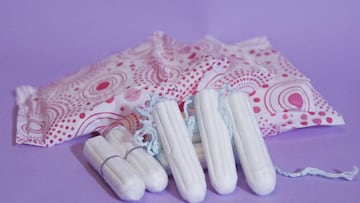Do tampons contain toxic metals? UC Berkeley study explains
Many women have been using tampons as their primary product for menstrual hygiene for years. Now, a study shows that some of them can contain toxic metals.


Women are regularly inconvenienced by their menstrual cycle, and products such as sanitary pads and tampons have helped them cope with the flow for decades.
The modern tampon has been around for almost a hundred years, helping women deal with their monthly period. These products have been a popular choice for users since they were invented in 1931 due to their convenience and comfort.
The tampon’s benefits have made it a must-have for many women. However, a recent study indicates that this ubiquitous product could potentially be harmful to women’s health.
READ ALSO: Risk of high temperatures in California
Do tampons contain toxic metals? UC Berkeley study explains
A study conducted by a researcher at the University of California-Berkeley School of Public Health found that tampons made by popular brands can contain harmful heavy metals such as lead, arsenic, and cadmium.
Lead author Jenni Shearston expressed concern that very few studies are looking into an issue that could potentially affect the health of millions of women.
“To our knowledge, this is the first paper to measure metals in tampons. Concerningly, we found concentrations of all metals we tested for, including toxic metals like arsenic and lead,” according to Shearston.
A new study led by a @UCBerkeleySPH researcher found that tampons from several brands can contain toxic metals like lead, arsenic and cadmium. Future research will test how much of these metals can leach out of the tampons and be absorbed by the body. https://t.co/ILDI13tNFw
— UC Berkeley (@UCBerkeley) July 5, 2024
READ ALSO: How a fan can prevent mosquitoes from biting you at night
The dangers of toxic tampons
Poisonous substances in tampons are particularly a cause for worry because the vagina’s skin is more prone to absorbing chemicals than skin found on the rest of the body.
Related stories
There is also the matter of the frequency of possible exposure. Around half of menstruating women use tampons during their period. Users of the sanitary product tend to have them within their body for several hours, or even days at a time every month. Majority of tampon users wear them overnight while sleeping.
The research does not delve into whether the metals detected have had negative effects on women. More research is needed to determine if women’s bodies absorb these metals, and if they are negatively affect by them.


Complete your personal details to comment